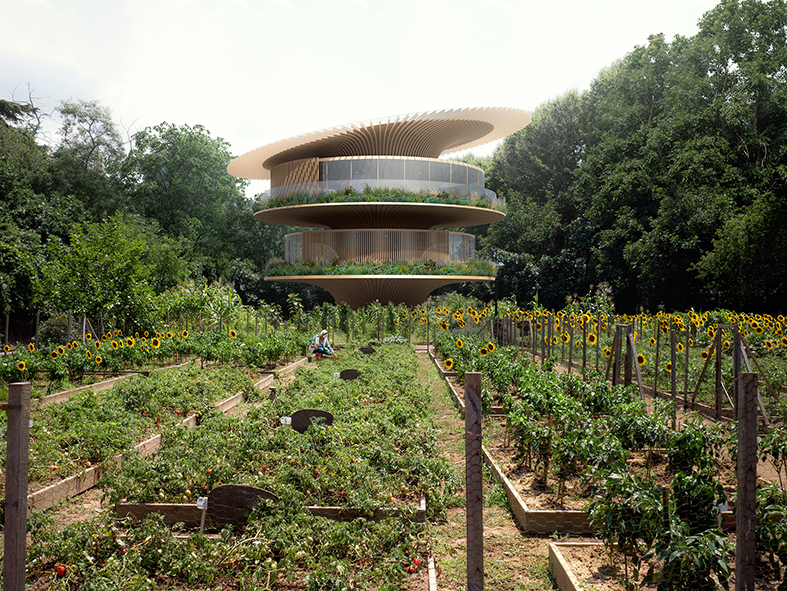“Scientists, designers, and architects talk about drawing inspiration from nature in an aesthetic sense,” Takada says. “We have a much more accurate, purposeful objective. It’s not just making it look like nature, but something that really contributes to greening cities.”
Koichi Takada
Sunflower House, by Koichi Takada
Born in Tokyo and based in Sydney, Takada takes his inspiration from trees, forests, seashells, and, in this case, sunflowers. “What nature does is fascinating,” he says. “In artificial structures you need a massive foundation, but with sunflowers nature somehow does this balancing act, with minimum intervention on the ground so the Earth itself also has room for other activities.”
The Sunflower House, designed for the Italian region of Umbria, should withstand and profit from the warming Mediterranean climate, where heat waves are becoming more frequent and more extreme.
Each floor hosts a two- or three-bedroom apartment, and each building can be as high as three stories. Scalability opens up the possibility of creating a climate-positive neighborhood inspired by sunflower fields, in which the plants self-organize, adopting a zigzag pattern that avoids overcrowding and maximizes exposure to sunlight.







